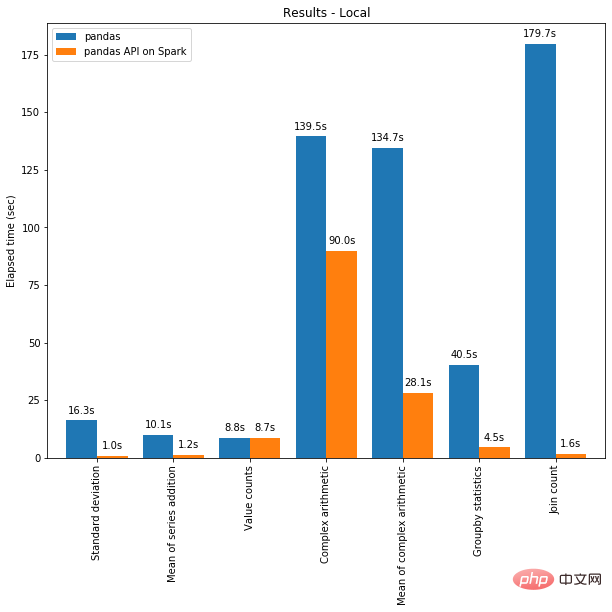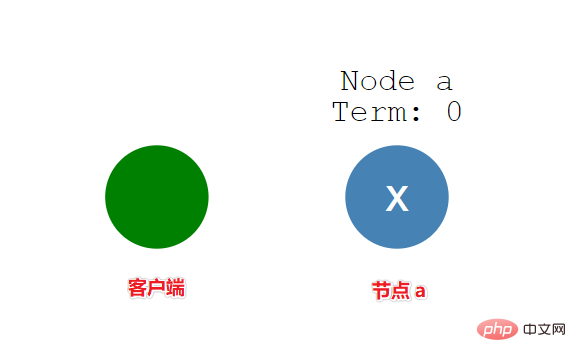 Database
Database Redis
Redis Detailed explanation of multi-language support for distributed task execution in Redis
Detailed explanation of multi-language support for distributed task execution in RedisIn recent years, with the continuous expansion of enterprise business, distributed system architecture has become the standard of the modern Internet. In distributed systems, task distribution and processing are crucial components. In order to achieve efficient task distribution and processing, many enterprises have begun to choose Redis as a key tool for distributed task execution.
As an open source, high-performance key-value storage system, Redis can not only provide high-concurrency data reading and writing services, but also has the ability to distribute and coordinate tasks in a distributed environment. At the same time, Redis also supports a variety of programming languages, such as Java, Python, C, etc., making the use of Redis to implement distributed task execution feasible in various development environments.
This article will introduce in detail the multi-language support of Redis in distributed task execution, including Java, Python and C, and compare and analyze their advantages and disadvantages in practical applications.
- Java language support
Java is one of the most popular programming languages. It has the advantages of cross-platform and security, and is widely used in enterprise-level applications and Internet applications. .
The native client of Redis in Java is Jedis, which is a simple, efficient, and stable Java client suitable for scenarios such as Redis distributed clusters and master-slave replication. In addition, other Java developers provide many third-party Redis clients based on Jedis.
Through the Jedis client, Java developers can easily access and operate Redis. In distributed task execution, Java developers can use the Jedis client to store tasks and corresponding processor information into the Redis data structure, and realize task distribution and execution through the publish/subscribe method of Redis.
Advantages:
- Efficiency: Jedis is the Java client officially provided by Redis. It has stable performance and supports Java 6 and above. It is very suitable for task processing in high concurrency environments. .
- Stability: Redis is very stable in multi-language support, and Java developers can easily operate Redis through the Jedis client.
- Ease of use: Jedis has good documentation and examples and is very easy to use for Java developers.
Disadvantages:
- Steep learning curve: For newcomers to Redis and Jedis, you need to invest some time to learn their basic concepts and usage.
- Limited scalability: For large-scale distributed task processing, using Jedis alone may not be able to meet the needs.
- Python language support
Python is a widely used interpreted development language that has the advantages of being easy to learn and use and having powerful data processing and analysis capabilities. It is also widely used in big data processing and web back-end development.
For Python developers, Redis provides a Python client-redis-py, which is the most popular Redis client in Python development. redis-py uses Python data structures to represent and process Redis commands, and supports advanced features such as connection pools and Redis clusters.
In distributed task execution, Python developers can use the redis-py client to store tasks and corresponding processor information into the Redis data structure, and rely on Redis's publish/subscribe method to achieve task distribution. and execution.
Advantages:
- Easy to learn and use: similar to Python’s data structure and syntax, the code is easy to read and maintain.
- Rich Python libraries: Python has many excellent third-party libraries, which are highly scalable and support a wider range of business scenarios.
- High availability: The connection pool used by the redis-py client supports connection reuse, and monitors Redis nodes through Redis Sentinel to ensure high availability.
Disadvantages:
- Low performance: Compared with Java, Python has certain performance problems.
- Version incompatibility: Earlier versions of redis-py are incompatible with the version of the Redis server and may require more adjustments and upgrades.
- C language support
C is a high-level language for developing high-performance software. It has the advantages of efficiency, portability and scalability. It is an ideal language for game development, image processing and other fields. Mainstream programming languages.
For C developers, Redis provides a C client—hiredis, which is a simple, efficient, and stable performance Redis client. It is based on C language, but also supports C STL style API.
In distributed task execution, C developers can use the hiredis client to store tasks and corresponding processor information into the Redis data structure, and realize task distribution and execution through the publish/subscribe method of Redis. implement.
Advantages:
- Efficiency: The Redis client hiredis written in C language is efficient and stable.
- Portability: C is a highly portable programming language that can be used on various platforms.
- STL style API: hiredis provides a C STL style API for easy use and maintenance.
Disadvantages:
- Steep learning curve: For non-C professional developers, understanding and using hiredis requires a certain learning curve.
- Lack of community support: Compared with Java and Python, the open source community is relatively weak, and the documentation and examples are not rich enough.
The above is a detailed explanation of Redis's multi-language support in distributed task execution. Different programming languages are suitable for different business needs. Java is suitable for high-concurrency, large-scale distributed task processing, Python is suitable for data processing and Web back-end business scenarios, and C is suitable for high-performance, portable system-level development.
In short, Redis provides client library support for various programming languages, making Redis more widely used in distributed systems. In actual selection, you need to weigh it based on business needs and team technology stack to achieve optimal results.
The above is the detailed content of Detailed explanation of multi-language support for distributed task execution in Redis. For more information, please follow other related articles on the PHP Chinese website!
 PHP实现开源SeaweedFS分布式文件系统Jun 18, 2023 pm 03:56 PM
PHP实现开源SeaweedFS分布式文件系统Jun 18, 2023 pm 03:56 PM在分布式系统的架构中,文件管理和存储是非常重要的一部分。然而,传统的文件系统在应对大规模的文件存储和管理时遇到了一些问题。为了解决这些问题,SeaweedFS分布式文件系统被开发出来。在本文中,我们将介绍如何使用PHP来实现开源SeaweedFS分布式文件系统。什么是SeaweedFS?SeaweedFS是一个开源的分布式文件系统,它用于解决大规模文件存储和
 Pandas 与 PySpark 强强联手,功能与速度齐飞!May 01, 2023 pm 09:19 PM
Pandas 与 PySpark 强强联手,功能与速度齐飞!May 01, 2023 pm 09:19 PM使用Python做数据处理的数据科学家或数据从业者,对数据科学包pandas并不陌生,也不乏像云朵君一样的pandas重度使用者,项目开始写的第一行代码,大多是importpandasaspd。pandas做数据处理可以说是yyds!而他的缺点也是非常明显,pandas只能单机处理,它不能随数据量线性伸缩。例如,如果pandas试图读取的数据集大于一台机器的可用内存,则会因内存不足而失败。另外pandas在处理大型数据方面非常慢,虽然有像Dask或Vaex等其他库来优化提升数
 PHP中的分布式数据中心May 23, 2023 pm 11:40 PM
PHP中的分布式数据中心May 23, 2023 pm 11:40 PM随着互联网的快速发展,网站的访问量也在不断增长。为了满足这一需求,我们需要构建高可用性的系统。分布式数据中心就是这样一个系统,它将各个数据中心的负载分散到不同的服务器上,增加系统的稳定性和可扩展性。在PHP开发中,我们也可以通过一些技术实现分布式数据中心。分布式缓存分布式缓存是互联网分布式应用中最常用的技术之一。它将数据缓存在多个节点上,提高数据的访问速度和
 使用Redis实现分布式计数器May 11, 2023 am 08:06 AM
使用Redis实现分布式计数器May 11, 2023 am 08:06 AM什么是分布式计数器?在分布式系统中,多个节点之间需要对共同的状态进行更新和读取,而计数器是其中一种应用最广泛的状态之一。通俗地讲,计数器就是一个变量,每次被访问时其值就会加1或减1,用于跟踪某个系统进展的指标。而分布式计数器则指的是在分布式环境下对计数器进行操作和管理。为什么要使用Redis实现分布式计数器?随着分布式计算的普及,分布式系统中的许多细节问题也
 分布式系统必须知道的一个共识算法:RaftApr 07, 2023 pm 05:54 PM
分布式系统必须知道的一个共识算法:RaftApr 07, 2023 pm 05:54 PM一、Raft 概述Raft 算法是分布式系统开发首选的共识算法。比如现在流行 Etcd、Consul。如果掌握了这个算法,就可以较容易地处理绝大部分场景的容错和一致性需求。比如分布式配置系统、分布式 NoSQL 存储等等,轻松突破系统的单机限制。Raft 算法是通过一切以领导者为准的方式,实现一系列值的共识和各节点日志的一致。二、Raft 角色2.1 角色跟随者(Follower):普通群众,默默接收和来自领导者的消息,当领导者心跳信息超时的
 Redis实现分布式配置管理的方法与应用实例May 11, 2023 pm 04:22 PM
Redis实现分布式配置管理的方法与应用实例May 11, 2023 pm 04:22 PMRedis实现分布式配置管理的方法与应用实例随着业务的发展,配置管理对于一个系统而言变得越来越重要。一些通用的应用配置(如数据库连接信息,缓存配置等),以及一些需要动态控制的开关配置,都需要进行统一管理和更新。在传统架构中,通常是通过在每台服务器上通过单独的配置文件进行管理,但这种方式会导致配置文件的管理和同步变得十分复杂。因此,在分布式架构下,采用一个可靠
 Redis实现分布式对象存储的方法与应用实例May 10, 2023 pm 08:48 PM
Redis实现分布式对象存储的方法与应用实例May 10, 2023 pm 08:48 PMRedis实现分布式对象存储的方法与应用实例随着互联网的快速发展和数据量的快速增长,传统的单机存储已经无法满足业务的需求,因此分布式存储成为了当前业界的热门话题。Redis是一个高性能的键值对数据库,它不仅支持丰富的数据结构,而且支持分布式存储,因此具有极高的应用价值。本文将介绍Redis实现分布式对象存储的方法,并结合应用实例进行说明。一、Redis实现分
 PHP与数据库分布式的集成May 15, 2023 pm 09:40 PM
PHP与数据库分布式的集成May 15, 2023 pm 09:40 PM随着互联网技术的发展,对于一个网络应用而言,对数据库的操作非常频繁。特别是对于动态网站,甚至有可能出现每秒数百次的数据库请求,当数据库处理能力不能满足需求时,我们可以考虑使用数据库分布式。而分布式数据库的实现离不开与编程语言的集成。PHP作为一门非常流行的编程语言,具有较好的适用性和灵活性,这篇文章将着重介绍PHP与数据库分布式集成的实践。分布式的概念分布式


Hot AI Tools

Undresser.AI Undress
AI-powered app for creating realistic nude photos

AI Clothes Remover
Online AI tool for removing clothes from photos.

Undress AI Tool
Undress images for free

Clothoff.io
AI clothes remover

AI Hentai Generator
Generate AI Hentai for free.

Hot Article

Hot Tools

Dreamweaver Mac version
Visual web development tools

Safe Exam Browser
Safe Exam Browser is a secure browser environment for taking online exams securely. This software turns any computer into a secure workstation. It controls access to any utility and prevents students from using unauthorized resources.

Zend Studio 13.0.1
Powerful PHP integrated development environment

SAP NetWeaver Server Adapter for Eclipse
Integrate Eclipse with SAP NetWeaver application server.

SublimeText3 English version
Recommended: Win version, supports code prompts!





